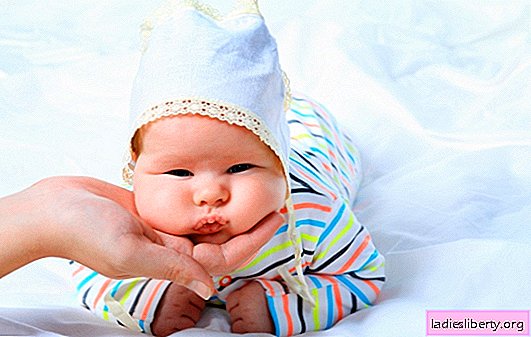
Fathers are usually happy if they have large children. But men are unlikely to guess how difficult it is for a woman to give birth to a "hero".
In obstetrics, it is customary to call a large newborn with a body weight of four kilograms two hundred grams to five kilograms. If the baby’s weight is even more, it is considered gigantic. At the same time, growth is not taken into account. Usually the body length of such a child reaches fifty-eight centimeters, with a norm of forty-eight to fifty-four centimeters.
Preparation for childbirth if the fetus is large
Assume that the baby will be born large, it is possible in advance. To do this, consider such factors:
- the length of the girth of the pregnant belly at the navel exceeds one hundred centimeters;
- the weight of the child according to the results of ultrasound is higher than normal;
- The increase in weight of the expectant mother is more than half a kilogram per week in the absence of edema.
Causes of large pregnancy
Athletes have recently been born more and more often. Why it happens?
Hereditary factor. This reason is the most common. Ask your parents what the birth weight was for you and your husband. Surely it turns out that more than four kilograms.
Improper nutrition. The “eat for two” installation leads to weight gain not only in women, but also in babies. Buns, cakes, chocolate, spices, animal fats - all this negatively affects the child.
Postponed pregnancy. Children born at the forty-second week of pregnancy are larger than those who appeared at the thirty-eighth. But if the pregnancy is prolonged, the baby turns out to be healthy and normally developed. When overriding, the child turns out to be large, but with some problems. The reason lies in the fact that the placenta can no longer transmit to the fetus a sufficient amount of nutrients and oxygen.
Rhesus conflict. Rhesus factor incompatibility (negative Rhesus in the mother and positive in the baby) leads to the breakdown of red blood cells in the crumbs. As a result, the baby's spleen and liver increase, the fluid is retained in the body, and it weighs more than it should.
Endocrine diseases in the expectant mother. In the second and third trimester, a pregnant woman may increase blood sugar. The mass of the fetus is also growing, there is an accumulation of fat reserves.
Features of childbirth. If the child is large, it is more difficult for him to be born. Delivery time increases by one to two hours. Sometimes there is a disproportion between the size of the pelvis of the woman in labor and the baby’s head. Then you have to resort to cesarean section. Weak labor is also possible - the muscles of the uterus weaken when carrying a large child.
And then what? If the birth was accompanied by complications, bleeding is possible for the next two weeks. It is possible that there were particles of the placenta inside. Then uterine massage and manual examination are necessary.
A baby is examined immediately after birth for a birth injury, hypoxia, hemolytic disease. Be sure to control the weight of the child. Obesity and metabolic disorders cannot be allowed. Therefore, the mixture should only be sour milk. The first lure is mashed vegetables, not porridge.











